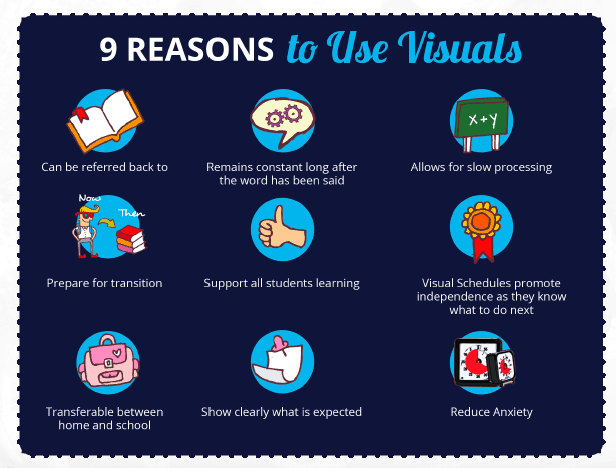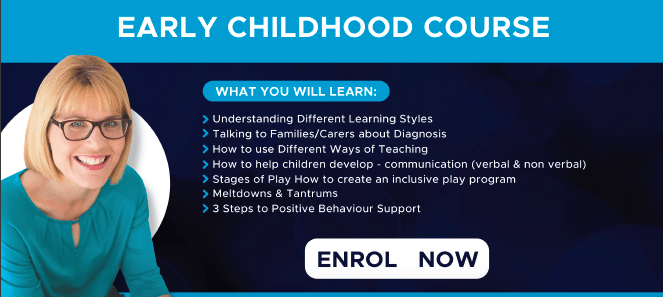❤️ USING VISUALS WHEN TEACHING STUDENTS WITH AUTISM ❤️
Children on the autism spectrum often can struggle with processing verbal or written cues. This is why it can be so effective to use visuals when teaching students with autism. Visuals include real objects, parts of objects or remnants (e.g. empty packet of sultanas), photographs of the actual object, photographs of similar objects, drawings, computer generated symbols (e.g. Boardmaker, Pics for PECS) and written words.
Why Use Visuals When Teaching Students with Autism?
Up to 80% of families have their child’s (with autism spectrum disorder) hearing test first because of delays in language development and not responding to verbal cues. The hearing test normally shows no problems, the issue is actually difficulty processing or understanding language.
This is why visuals are very important to use with a child on the autism spectrum in everyday life to support verbal language.

HOW TO USE VISUALS WHEN TEACHING STUDENTS WITH AUTISM

Always couple visuals with speech. They are an aid to help you understand spoken language, not a substitute.

Be eclectic. You do not need to only use one type of visual.

Always print the name of the visual, to ensure consistent language (does the student with autism say mug or cup) and to aid in long term literacy.

To be valuable visuals must be accessible. Keep them near where you are likely to use them e.g. sticking a finish symbol on the door frame in every room means one is always available

Wait! Like all communication you need to allow the child time to process and point

Persevere. Your child may need many trials before they make the connection between the visual and the real object.

Speak to your speech therapist/pathologist about introducing your child to PECS (Picture Exchange Communication System)

Visuals will continue to be of value to your child even after they have learnt to talk – they will be able to check back to them whenever unsure.

Remember most people use visuals – shopping lists, diaries, social scripts… are all visuals!


 For all orders outside Australia please email
For all orders outside Australia please email 